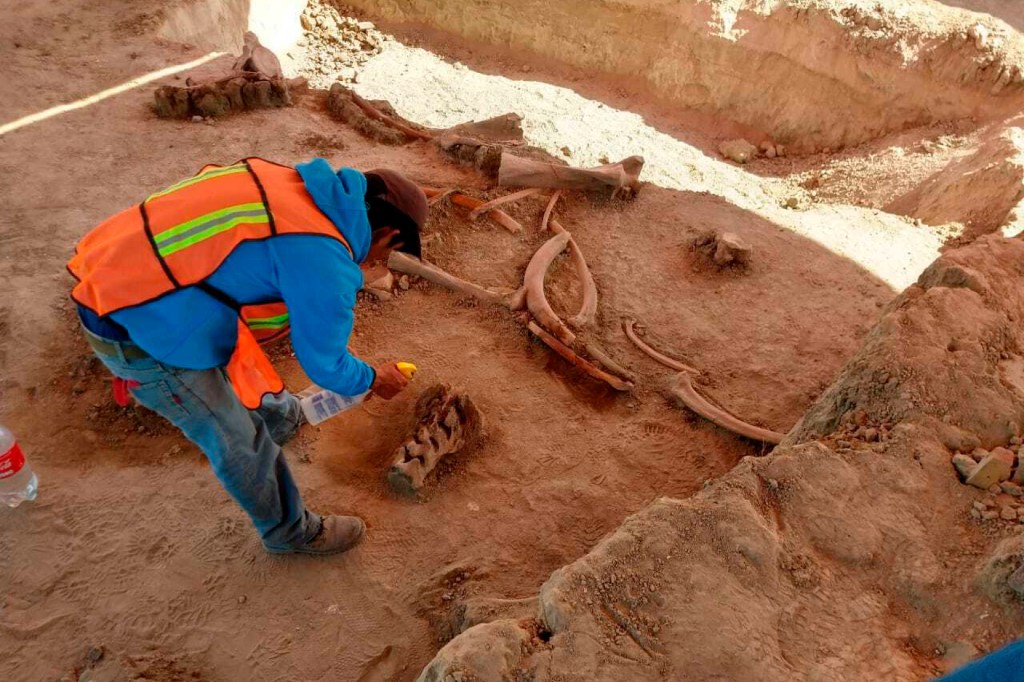A Mammoth Find

Archaeologists have uncovered the bones of 60 mammoths near Mexico City, Mexico. The fossils were found under an airport that’s under construction. In October, Mexico’s National Institute of Anthropology and History began digging at the site. Since then, archaeologists have excavated the bones of 60 mammoths. Experts say there are many more in the ground.
“There are too many, there are hundreds,” says the institute’s Pedro Sánchez Nava. Archaeologists have been able to excavate about 10 mammoths a month since their work began. They will continue to dig until 2022, when construction at the airport is completed. So far, nothing has been found that would require work on the airport to stop.
Mammoths were huge, elephant-like herbivores. They disappeared from the region that is now Mexico some 10,000 years ago. They became extinct around 4,000 years ago. Scientists say the new fossils could help them understand why the species died out.

ANCIENT ANIMAL This illustration shows what a mammoth might have looked like.
SCIEPRO/SCIENCE PHOTO LIBRARY/GETTY IMAGESSome of the bones were found on the shores of an ancient body of water. The large, shallow lake is gone, but it was once surrounded by grass and reeds. This attracted mammoths, each of which ate up to 330 pounds of plants every day. “It was like paradise for them,” Sánchez Nava says.
The excavations are happening about six miles from San Antonio Xahuento, where mammoth fossils were found last year. Scientists discovered two pits there that were six feet deep. They were dug by humans, about 15,000 years ago.
Scientists believe hunters used the pits to trap mammoths. People may have chased the animals into these traps. The bones of 14 animals were found in of them.
At the new site, the mammoths probably died after getting stuck in mud. Sánchez Nava says it’s possible that humans chased the animals into the soft earth. After doing so, they may have eaten the mammoths. The large number of fossils indicates that prehistoric humans may have regularly eaten mammoths. “In fact, it may have been part of their daily diet,” Sánchez Nava says.











